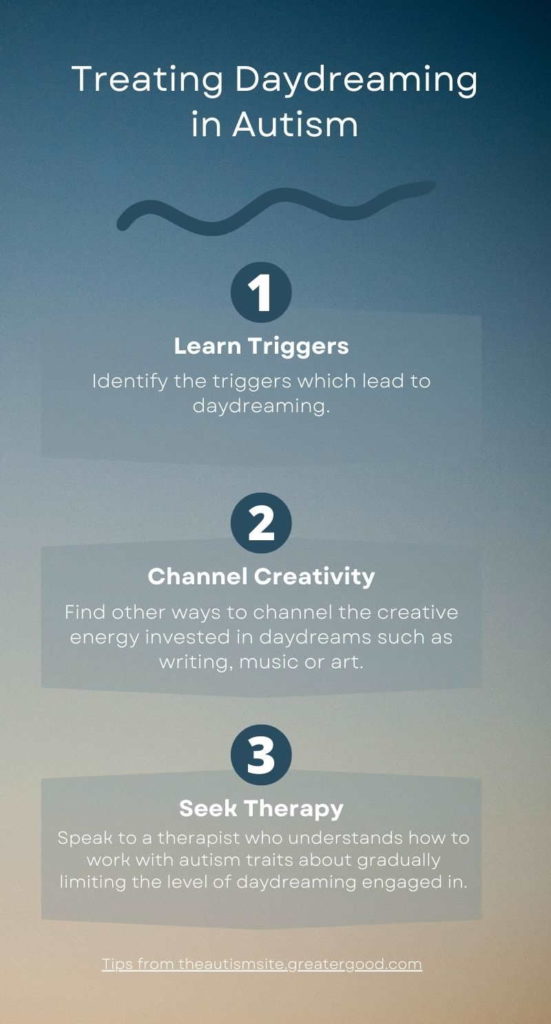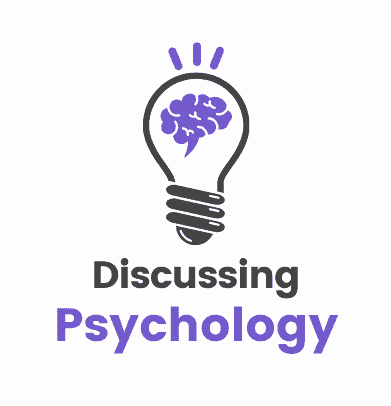In the last few years, researchers have come to suspect there might be a link between autism and maladaptive daydreaming.
The idea makes sense: both conditions involve highly elaborate, obsessive and repetitive thinking, often accompanied by repetitive physical movements (known as ‘stimming’ in relation to autism).
But what does the science say? Is there actually a relationship or is it a symptom of coincidence?
Research on Maladaptive Daydreaming and Autism
Intrigued by the potential link between maladaptive daydreaming (MD) and autism, MD researchers conducted an extensive study recruiting over 500 participants to test for these conditions.
All participants completed an Autism-Spectrum Quotient, a test to measure autistic traits and the Maladaptive Daydreaming Scale (MDS) to measure the extent of maladaptive daydreaming.
The results showed a clear link between levels of maladaptive daydreaming and autism traits. This suggested that the two could indeed be closely connected.
However, the picture becomes somewhat less clear when other variables are taken into account.
Maladaptive Daydreaming and Loneliness
In the above study, the researchers also tested for levels of social isolation and difficulty with emotional regulation.
Both of these traits are common but not exclusive to people with autism.
It was found that levels of isolation and difficulty with regulating emotions were both significant mediators in the link between autism and maladaptive daydreaming.
In other words, autism causes people to feel isolated and to experience emotional regulation difficulties, which may cause higher levels of maladaptive daydreaming.
It is believed that even in people without any autistic traits, MD is often used as a way of coping with dissatisfaction with their real-life situations.
Maladaptive daydreaming often revolves around themes of power and recognition that people find to be lacking in their real lives. In this respect, the function and cause of MD is the same in both autistic and non-autistic individuals.
So while there still may be some links between how autistic people think and process the world and a tendency to engage in excessive daydreaming, a big part of this link may be down to the conditions autism creates rather than the condition itself.
Autism, Daydreaming and Social Functioning
People with autism often find social situations very challenging. Research shows that autistic individuals typically:
- Struggle to pick up on and respond to social cues.
- Have difficulty recognizing facial expressions.
- Often have trouble establishing a sense of joint attention with other people.
Interestingly, examining the way people with autism daydream may offer some insight into the causes of these social challenges.
Brain Differences
While at rest, an area of the brain referred to as the resting network is active.
This network is responsible for much of our subconscious processing, including the processing of social events, emotional regulation, and developing a sense of self-awareness.
The resting network is also responsible for daydreaming.
How does this relate to autism?
Chang cites a study that examined brain activity in autistic and non-autistic people while resting and while completing mentally strenuous tasks.
Below are the results cited in the study.
Brain Activity: Non-Autistic People vs Autistic People
| Non-Autistic People | Autistic People |
| The resting network was active while at rest (unsurprisingly) and quietened down during the task so that other brain areas responsible for conscious thought could take over. This is the expected outcome of neuro-typical individuals. | The resting network is comparatively inactive while at rest, but it did not fully switch off when they were engaged in the task. A consistent, low level of activity in the resting network was present whether at rest or engaged. |
Several interesting conclusions can be drawn from the table above.
- First, the lower levels of activity in the resting network may contribute to the emotional and social difficulties people with autism experience.
- Second, people with autism don’t daydream in the same way others do because different levels of brain activity are involved.
It’s also possible that the low level of activity in the resting network contributes to the attention deficits often seen in people with autism.
There is always some level of activity in the network responsible for daydreaming, and this could potentially interfere with attention throughout the day.
Treating Maladaptive Daydreaming in Autism
There are currently no maladaptive daydreaming therapists, nor is there a standardized treatment for maladaptive daydreaming, with or without the presence of autism.
However, given that the increased tendency towards MD is at least partially caused by social isolation, developing better social skills may help reduce loneliness and isolation, therefore reducing the need to engage in MD.
Socializing and understanding the perspectives of others may not come naturally to people with autism, but these skills can still be learned.

The Autism Site also makes these recommendations to gain control of unhelpful daydreaming:
- Identify the triggers which lead to daydreaming.
- Find other ways to channel the creative energy invested in daydreams such as writing, music or art.
- Speak to a therapist who understands how to work with autism traits about gradually limiting the level of daydreaming engaged in.
Conclusion
Furthering our understanding of the interplay between autism and daydreaming and developing effective treatments for when daydreams become excessive could shed new light on the often inscrutable minds of people living with autism, while also offering ways to help them engage more successfully with the world.
- Chang, L. (2006, May 9). Daydream brain activity: Autism clue?. WebMD. https://www.webmd.com/brain/autism/news/20060509/daydream-brain-activity-autism-clue#:~:text=May%208%2C%202006%20%2D%2D%20People,absent%20in%20people%20with%20autism.
- Nordqvist, C. (2006, May 13). Autistic individuals do not daydream like non-autistic people do. Medical News Today. https://www.medicalnewstoday.com/articles/43418#1
- Pietrangelo, A. (2020, October 22). Stimming: Causes and management. Healthline. https://www.healthline.com/health/autism/stimming
- Somer, E. (2002). Maladaptive daydreaming: A qualitative inquiry. Journal of Contemporary Psychotherapy 32, 197–212. https://doi.org/10.1023/A:1020597026919
- Somer, E., Somer, L., & Jopp, D. (2016). Parallel lives: A phenomenological study of the lived experience of maladaptive daydreaming. Journal Of Trauma & Amp; Dissociation, 17(5), 561–576. https://doi.org/10.1080/15299732.2016.1160463
- Stout, A. (n.d.) Your child might have this condition you’ve never heard of… The Autism Site. https://blog.theautismsite.greatergood.com/maladaptive-daydreaming/
- Weiss, M., & Harris, S. (2001). Teaching social skills to people with autism. Behavior Modification, 25(5), 785–802. https://doi.org/10.1177/0145445501255007
- West, M. J., Somer, E., & Eigsti, I. (2020). The association between autism traits and maladaptive daydreaming [Webinar]. International Society for Autism Research. https://insar.confex.com/insar/2020/meetingapp.cgi/Paper/34919

